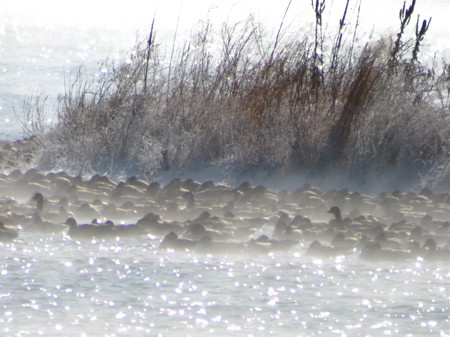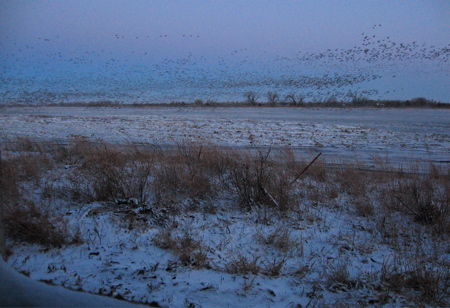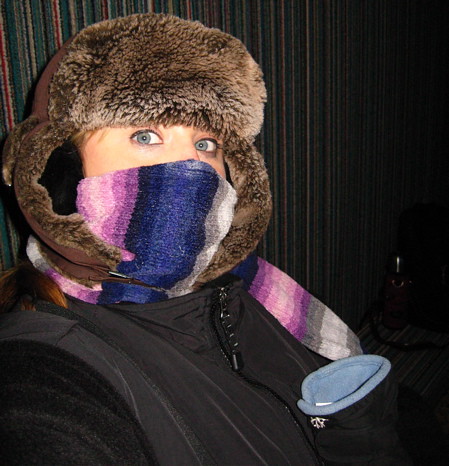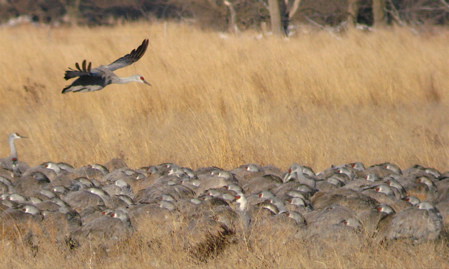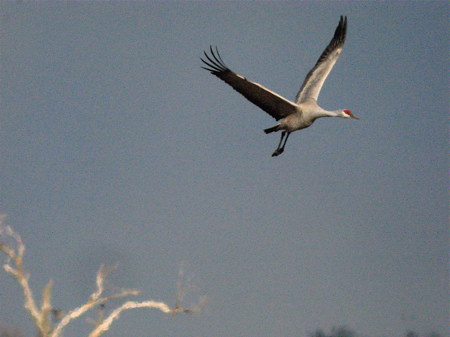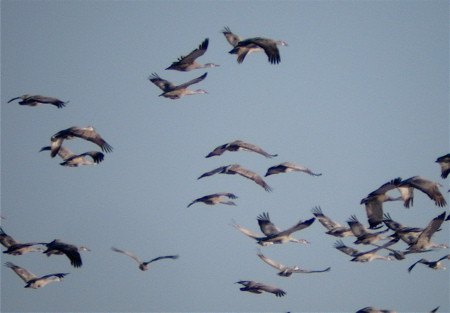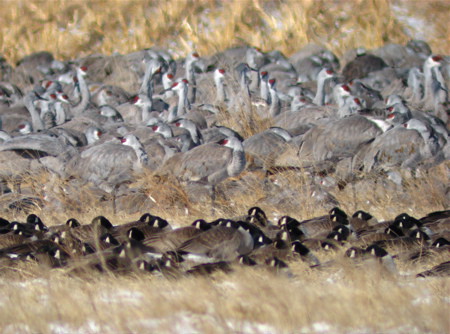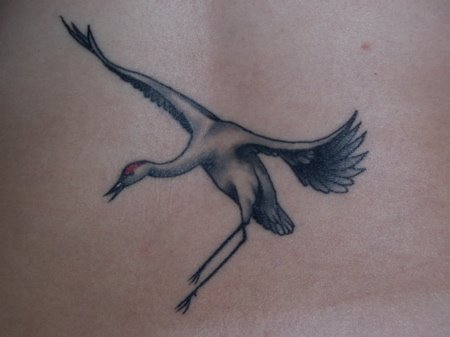 Well, I guess I better keep my lower back covered in orange this fall: The Minnesota DNR announced that after 94 years they are reopening a hunting season on sandhill cranes this fall.
Well, I guess I better keep my lower back covered in orange this fall: The Minnesota DNR announced that after 94 years they are reopening a hunting season on sandhill cranes this fall.
I know some birders are outraged by this, but I have to admit, I'm not so outraged. I'm a little curious that it seemed to happen with no discussion, the DNR just suddenly announced it without any public input. The only hint I saw was a pole on the Outdoor News website a few months ago asking if Minnesota should have a season on cranes. Originally, the pole was in favor of the hunt until the site was mentioned on a few birding listservs and birders swayed the pole to a firm "No." There's currently another pole asking if people approve of the season. Birders have yet to find it, so the overwhelming answer on the hunting website is, "Yes!"
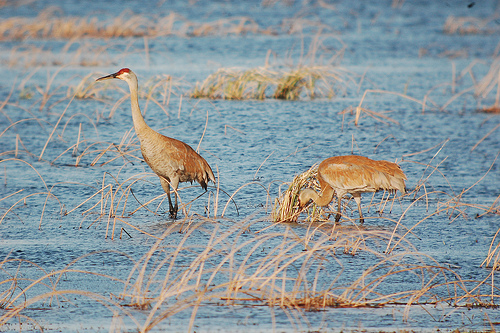
I'm not a hunter, although this summer I have been trying my hand at fishing and I understand the interest in hunting. Heck, quite a few of the techniques I use for getting photos of birds are similar to hunting techniques of getting closer to wildlife, I understand the human nature's thrill of the chase (I have a ghillie suit for cryin' out loud). But I see this being a good thing in the long run. When a bird or any other animal is suddenly made a game species, all sorts of money goes to habitat restoration and insuring we have a sustainable population (to hunt). Many other bird species including native warblers, sparrows, shorebirds and all sorts of wildlife would benefit from sandhill crane habitat protection, so in the long run, this could be good news for habitat.
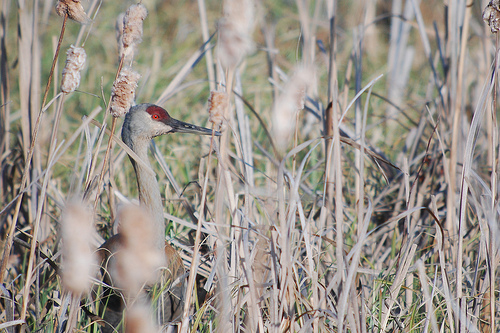
Sandhill cranes are already a game species in a handful of other states. I have had conversations with 2 different crane hunters. Both had the same comments about cranes: 1. They are hard to hunt, very cagey and wary of decoys. 2. It is some of the best bird meat you will ever eat in your life--better than grouse, better than turkey and even better than pheasant.
Who knows, maybe a Cranes Unlimited organization will sprout up? Will there be a Crane Stamp leading to more conservation dollars? Hunting groups are well organized and get the money they need for their species, I would argue they are more organized than most birding groups.
We have a healthy population of cranes in Minnesota. Our population that breeds in the state is part of a 450,000 bird population that exceeded the conservation goal of 349,000. That's a lot of cranes. Birders may not agree with it, but they can at least take heart that there will be dollars seriously set aside for crane habitat.
And really, do birders have as organized a voice as hunters? Had there been a time for public comment on a crane season, would they have had a strong enough voice to stop it?

